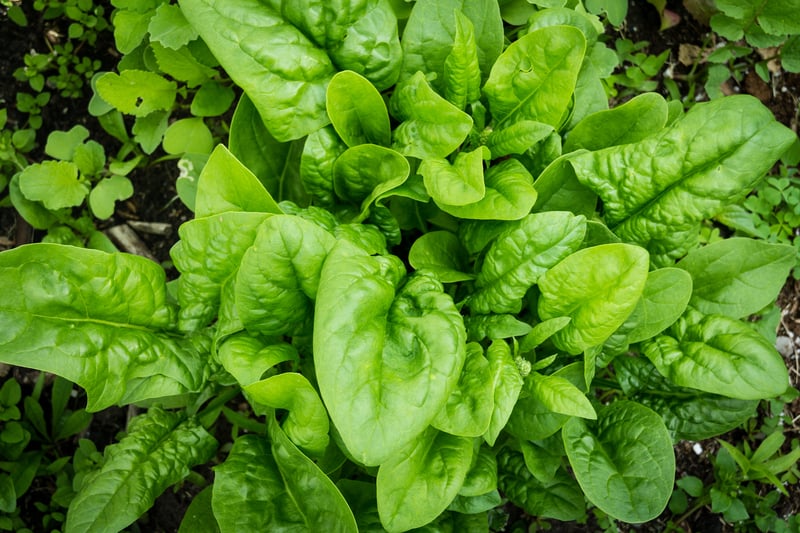
As summer begins to wind down in New Jersey’s Zone 7a, many gardeners might assume it’s time to start wrapping up their growing season. However, late August is actually an excellent time to refresh your garden with cool-season crops and prepare for a productive fall harvest. With the right choices, you can extend your gardening well into the cooler months, enjoying fresh produce even as the temperatures drop.
Leafy Greens: Spinach, Kale, and Lettuce
Leafy greens are some of the best crops to plant in late August. Spinach, kale, and lettuce thrive in cooler weather, and with New Jersey’s milder fall temperatures, you can expect these plants to grow vigorously.
- Spinach: Sow seeds directly into the garden, and you’ll likely be harvesting tender leaves within 4-6 weeks. Spinach is quite frost-tolerant, making it a reliable choice for late-season planting.
- Kale: Kale is another hardy green that can withstand cooler temperatures. Plant seeds or transplants now, and you can harvest baby kale in just a few weeks, with full-sized leaves available later in the season.
- Lettuce: Consider planting quick-growing varieties like leaf lettuce, which can be harvested in just 30 days. Succession planting every two weeks will ensure a steady supply of fresh salad greens into the fall.
Root Vegetables: Carrots, Beets, and Radishes
Root vegetables are another great option for late August planting. These crops develop underground, making them less susceptible to frost damage.
- Carrots: Carrots take a bit longer to mature, but late August planting will give them plenty of time to develop before the first frost. Consider shorter, quicker-maturing varieties for a fall harvest.
- Beets: Beets can be planted now for a fall harvest. They are relatively quick to mature and can be harvested for both their roots and nutritious greens.
- Radishes: Radishes are one of the fastest-growing crops, maturing in as little as 3-4 weeks. This makes them an excellent choice for a quick turnaround, giving you multiple harvests before the weather turns too cold.
Brassicas: Broccoli, Cauliflower, and Cabbage
Brassicas, such as broccoli, cauliflower, and cabbage, are well-suited for late summer planting. These vegetables prefer cooler weather and will mature nicely as the days get shorter.
- Broccoli: Broccoli planted in late August will benefit from cooler temperatures as it matures, reducing the risk of bolting. Transplants are often more successful than direct seeding at this time of year.
- Cauliflower: Like broccoli, cauliflower thrives in cooler weather. It requires a bit more attention but rewards with a delicious, crisp harvest by late fall.
- Cabbage: Cabbage can withstand a light frost, making it a perfect choice for a fall harvest. Planting now will ensure the heads have time to develop fully.
Herbs: Parsley, Cilantro, and Dill
Herbs like parsley, cilantro, and dill do well in the cooler weather of fall. They grow quickly and can be harvested continually until the first hard frost.
- Parsley: Parsley is a biennial, which means it can survive the winter and produce again in the spring. It’s an excellent herb to plant now for both fall and early spring harvests.
- Cilantro: Cilantro tends to bolt in the heat of summer, but planting in late August will allow you to enjoy fresh leaves without the worry of bolting.
- Dill: Dill can also benefit from the cooler weather. Planting now will provide fresh herbs for fall cooking, and the plant can even survive light frosts.
Cover Crops
If you’re looking to prepare your garden for next spring rather than continuing to harvest this year, late August is a good time to plant cover crops. Cover crops like clover, rye, and vetch help improve soil health by adding organic matter, fixing nitrogen, and preventing erosion during the winter months.
Tips for Success
- Soil Preparation: As you transition from summer to fall planting, make sure to refresh your soil with compost or organic fertilizers. This will provide essential nutrients to your new plants.
- Watering: Late August can still be hot and dry, so keep your newly planted seeds and transplants well-watered until the weather cools.
- Mulching: Mulching around your plants can help retain moisture and keep the soil temperature stable as the weather changes.
Late August is not the end of the gardening season in New Jersey’s Zone 7a. With the right selection of crops and some careful planning, your garden can continue to produce a bountiful harvest well into the fall. By planting leafy greens, root vegetables, brassicas, herbs, and even cover crops, you can make the most of your garden space and enjoy fresh, homegrown produce long after summer has passed.

